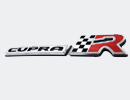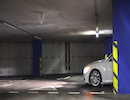4 prispevkov
Stran 1 od 1
-

splash - Poznavalec foruma
- Prispevkov: 2352
- Pridružen: To nov 16, 2004 9:27 pm
Zakaj ima žogica za golf vdolbine (prevede kdo par stavkov?)
ne, ni zajebancija...
res me zanima.
vem da je nekaj s sališča aerodinamike, vendar ne vem točno, čem pripomorejo luknje (morda natančnejši strel, vendar zakaj)
lahko tudi kakšno formulo kdo napiše, če kaj paše zraven...
res me zanima.
vem da je nekaj s sališča aerodinamike, vendar ne vem točno, čem pripomorejo luknje (morda natančnejši strel, vendar zakaj)
lahko tudi kakšno formulo kdo napiše, če kaj paše zraven...
Zadnjič spremenil splash, dne Če avg 28, 2008 9:07 am, skupaj popravljeno 1 krat.
-

adis - Uporabnik
- Prispevkov: 8095
- Pridružen: To jan 30, 2007 1:47 pm
- Kraj: Ljubljana
Dimples first became a feature of golf balls when a certain Taylor patented a dimple design in 1908. Other types of patterned covers were in use at about the same time, including one called a "mesh" and another named the "bramble", but the dimple became the dominant design due to "the superiority of the dimpled cover in flight".[4]
Most golf balls on sale today have about 300 – 450 dimples. There were a few balls having over 500 dimples before. The record holder was a ball with 1,070 dimples — 414 larger ones (in four different sizes) and 656 pinhead-sized ones. All brands of balls, except one, have even-numbered dimples. The only odd-numbered ball on the market is a ball with 333 dimples, called the Srixon AD333.
Officially sanctioned balls are designed to be as symmetrical as possible. This symmetry is the result of a dispute that stemmed from the Polara, a ball sold in the late 1970s that had six rows of normal dimples on its equator but very shallow dimples elsewhere. This asymmetrical design helped the ball self-adjust its spin-axis during the flight. The USGA refused to sanction it for tournament play and, in 1981, changed the rules to ban aerodynamic asymmetrical balls. Polara's producer sued the USGA and the association paid US$1.375 million in a 1985 out-of-court settlement.
Golf equipment maker Callaway has introduced a ball with hexagonal dimples to increase the dimpled area on a golf ball, as hexagons tesselate unlike circles.
The United States Patent and Trademark Office's patent database is a good source of past dimple designs. Most designs are based on Platonic solids such as icosahedron.
Golf balls are usually white, but are available in other high visibilty colours , which helps with finding the ball when lost or when playing in frosty conditions. As well as bearing the makers name or logo, balls are usually printed with numbers or other symbols to help players identify their ball.
več na:
http://en.wikipedia.org/wiki/Golf_ball
http://www.taylor-hobson.com/dimpled-golf%20-ball.html
Most golf balls on sale today have about 300 – 450 dimples. There were a few balls having over 500 dimples before. The record holder was a ball with 1,070 dimples — 414 larger ones (in four different sizes) and 656 pinhead-sized ones. All brands of balls, except one, have even-numbered dimples. The only odd-numbered ball on the market is a ball with 333 dimples, called the Srixon AD333.
Officially sanctioned balls are designed to be as symmetrical as possible. This symmetry is the result of a dispute that stemmed from the Polara, a ball sold in the late 1970s that had six rows of normal dimples on its equator but very shallow dimples elsewhere. This asymmetrical design helped the ball self-adjust its spin-axis during the flight. The USGA refused to sanction it for tournament play and, in 1981, changed the rules to ban aerodynamic asymmetrical balls. Polara's producer sued the USGA and the association paid US$1.375 million in a 1985 out-of-court settlement.
Golf equipment maker Callaway has introduced a ball with hexagonal dimples to increase the dimpled area on a golf ball, as hexagons tesselate unlike circles.
The United States Patent and Trademark Office's patent database is a good source of past dimple designs. Most designs are based on Platonic solids such as icosahedron.
Golf balls are usually white, but are available in other high visibilty colours , which helps with finding the ball when lost or when playing in frosty conditions. As well as bearing the makers name or logo, balls are usually printed with numbers or other symbols to help players identify their ball.
več na:
http://en.wikipedia.org/wiki/Golf_ball
http://www.taylor-hobson.com/dimpled-golf%20-ball.html
-

splash - Poznavalec foruma
- Prispevkov: 2352
- Pridružen: To nov 16, 2004 9:27 pm
A ball moving through air experiences two major aerodynamic forces, lift and drag. Dimpled balls fly farther than non-dimpled balls due to the combination of two effects:
hvala, adis...
samo a je kdo tukaj slučajno ki bi prevedel v slovenščino tole...
saj zastopim, samo neke strokovne besede me pa matrajo...
Firstly, the dimples delay separation of the boundary layer from the ball. Early separation, as seen on a smooth sphere, causes significant wake turbulence, the principal cause of drag. The separation delay caused by the dimples therefore reduces this wake turbulence, and hence the drag.
Secondly, backspin generates lift by deforming the airflow around the ball, in a similar manner to an airplane wing. This is called the Magnus effect. Backspin is imparted in almost every shot due to the golf club's loft (i.e. angle between the clubface and a vertical plane). A backspinning ball experiences an upward lift force which makes it fly higher and longer than a ball without spin.[1] Sidespin occurs when the clubface is not aligned perpendicularly to the direction of swing, leading to a lift force that makes the ball curve to one side or the other. Unfortunately the dimples magnify this effect as well as the more desirable upward lift derived from pure backspin. (Some dimple designs are claimed to reduce sidespin effects.)
hvala, adis...
samo a je kdo tukaj slučajno ki bi prevedel v slovenščino tole...
saj zastopim, samo neke strokovne besede me pa matrajo...
Firstly, the dimples delay separation of the boundary layer from the ball. Early separation, as seen on a smooth sphere, causes significant wake turbulence, the principal cause of drag. The separation delay caused by the dimples therefore reduces this wake turbulence, and hence the drag.
Secondly, backspin generates lift by deforming the airflow around the ball, in a similar manner to an airplane wing. This is called the Magnus effect. Backspin is imparted in almost every shot due to the golf club's loft (i.e. angle between the clubface and a vertical plane). A backspinning ball experiences an upward lift force which makes it fly higher and longer than a ball without spin.[1] Sidespin occurs when the clubface is not aligned perpendicularly to the direction of swing, leading to a lift force that makes the ball curve to one side or the other. Unfortunately the dimples magnify this effect as well as the more desirable upward lift derived from pure backspin. (Some dimple designs are claimed to reduce sidespin effects.)
- rnisan
- Novinec
- Prispevkov: 377
- Pridružen: So feb 09, 2008 11:51 pm
splash je napisal/-a:A ball moving through air experiences two major aerodynamic forces, lift and drag. Dimpled balls fly farther than non-dimpled balls due to the combination of two effects:
hvala, adis...
samo a je kdo tukaj slučajno ki bi prevedel v slovenščino tole...
saj zastopim, samo neke strokovne besede me pa matrajo...
Firstly, the dimples delay separation of the boundary layer from the ball. Early separation, as seen on a smooth sphere, causes significant wake turbulence, the principal cause of drag. The separation delay caused by the dimples therefore reduces this wake turbulence, and hence the drag.
Secondly, backspin generates lift by deforming the airflow around the ball, in a similar manner to an airplane wing. This is called the Magnus effect. Backspin is imparted in almost every shot due to the golf club's loft (i.e. angle between the clubface and a vertical plane). A backspinning ball experiences an upward lift force which makes it fly higher and longer than a ball without spin.[1] Sidespin occurs when the clubface is not aligned perpendicularly to the direction of swing, leading to a lift force that makes the ball curve to one side or the other. Unfortunately the dimples magnify this effect as well as the more desirable upward lift derived from pure backspin. (Some dimple designs are claimed to reduce sidespin effects.)
Ti bom na kratko in jedrnato prevedu...
Vdolbinice zamaknejo razmik notranjega in zunanjega dela žogice. Zgodnji razmik teh dveh slojev povzroči turbulenco, kar slabo vpliva na upor. Z vdolbinicami je manj turbulence, manj upora (dlje leti žogica).
Vrtenje žogice nazaj povzroča manjši tlak nad žogico (deluje podobno kot krilo letala) in jo zato dodatno dvigne v zrak (doseže višjo višino). Temu rečemo Magnusov efekt. Vrtenje žogice vzvratno se pojavi pri skoraj vsakem udarcu zaradi oblike palice. Žogica, ki se vzvratno vrti doseže višjo višino (večja dvižna sila vpliva na njo) in leti dlje kot pa žogica, ki se ne vrti. Če pa žogico po domače felšaš (udariš postrani, torej pot palice ni v isti ravnini kot pot žogice), potem žogica zaradi vdolbinic naredi večji ovivek, kot bi ga, če ne bi imela vdolbinic. To je pri golfu (v nasprotju z nogometom
Upam, da je vse razumljivo in da sem pomagal. Če komu še kaj ni jasno pa kar vprašaj.
lp
4 prispevkov
Stran 1 od 1
Kdo je prisoten
Po forumu brska: 0 registriranih uporabnikov in 2 gostov
